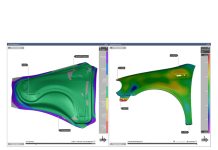Science Talk Espisode 2: On Finding the Balance between Physical Modeling and AI Based Models
In this article, we put four questions to Prof. Jeong Whan Yoon to learn more about the future role of artificial intelligence in sheet metal stamping. He is currently the Professor of Mechanical Engineering at KAIST in Korea and Professor of Applied Mechanics at Deakin University in Australia
Artificial Intelligence (AI) provides a powerful set of tools that enable previously-unimaginable innovations in engineering applications. What do you see as the main application areas in sheet metal forming technology?
AI methods are popular for most engineering applications, including sheet metal forming. In that regard, they can be applied to both process optimization and constitutive modeling. The first example we’ll look at is hairpin forming, an essential part for electric motors achieved using three bending processes: R-bending, V-bending, and U-bending. The U-bending process in particular requires very tight control for springback, since the hairpin must be installed in the stator within tolerance. Springback can be controlled through the active damper location during the U-bending process. When the hairpin springback is outside tolerance, the production mode is shifted to AI mode to propose a new damper location. When the hairpin springback is located within a stable tolerance, it returns to the production mode.
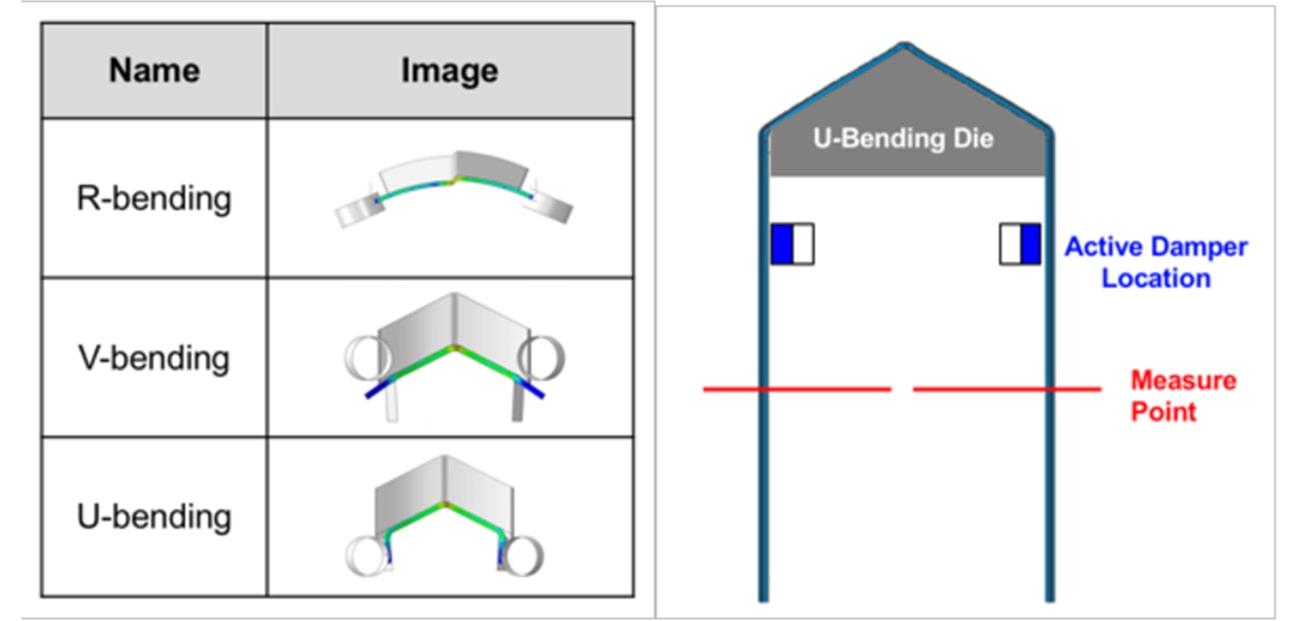
Fig. 1: AI-mode springback control for hairpin forming
The second example we’ll explore is predicting the forming limit for a new product, such as a complex TV back cover. Whenever a new geometry is created, the designer needs to know whether the new product is actually formable. The confusion matrix is trained with FLC through simulation. The AI system is a machine-learning based classifier that informs whether the new change in geometry is safe, marginal or crack. Generally, this type of classifier has very high accuracy.
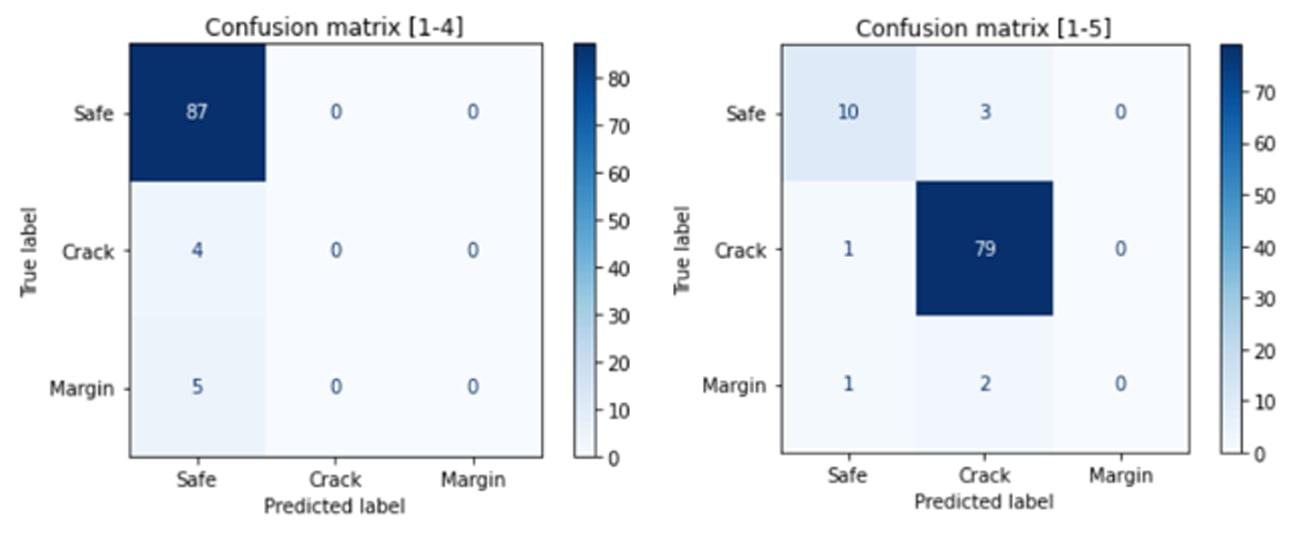
Fig. 2: Machine learning based classifier for a TV back cover
In constitutive modeling, AI is already being used to fit complicated hardening data. For example, the JC hardening model ([static][dynamic][temperature]) cannot fit the coupled behavior of strain-rate and temperature due to inherent decoupling between dynamic and temperature. However, AI has the ability to fit the model excellently (International Journal of Plasticity 135 (2020) 102811 by Jordan, Gorji, Mohr).
AI methods provide enormous flexibility, making it difficult to keep track of the physical systems like classical physical models. How do you view the balance between physical modeling and AI based models? Do you think that in the future, we will only use AI based models to solve engineering problems?
AI is an interpolation system with training. Therefore, it’s necessary to provide a sufficient number of training sets, as the accuracy is not guaranteed for untrained areas. We can easily observe the weakness of AI when it is extrapolated. So, the extrapolation outside of the trained domain is dangerous and the system becomes unpredictable. In addition, when AI is used to directly solve an engineering problem, it is then problem dependent. An AI system trained for circular cup forming cannot be applied to square cup forming because the training is not physics based. However, AI can be a great asset to overcome numerical problems by maintaining the physical system. For example, it is required to conduct the return mapping method for elasto-plastic stress integration. Elastic prediction is linear; however, the plastic correction requires nonlinear iterations. AI can be successfully utilized to replace nonlinear iteration by training all the major points of yield surface with hardening — creating the problem independent constitutive law. As a result, it’s wise to use AI combined with a physics-based approach in sheet metal forming (International Journal of Plasticity 138 (2021) 102919 by Jang, Fazily, Yoon).

ANN-based constitutive model
You mentioned your projects regarding AI based online control and expert systems. Successful AI applications require big data, which is many times harder to obtain for those particular applications. What is your strategy in this respect?
A key issue for AI-based online control is accumulating big data. The initial operation of the AI system requires the minimum amount of data to ensure accuracy. Simulation can help dramatically in this regard. It should be tuned with the basic experimental benchmark data before being used for AI training purposes. Then, simulation can accumulate enough data to run the AI model. Once the AI model is running in production, the experimental data corrected from the production can be added to control various process conditions. The AI system becomes increasingly powerful by accumulating the production big data, as demonstrated in the hairpin example. The same logic can be used to control servo press motion to maximize forming limit and minimize springback.
We are currently in the first generation of AI based applications in forming technology. What will the next generation look like? What technologies will enable this transition?
The first generation AI method is sensing and prediction. For example, FEM uses many inputs and also produces many outputs. However, from a design view, we only need a small amount of information. For example, in forming limit prediction, the user is only interested in the anisotropy and hardening curves as input parameters and the major and minor strains as outputs. The in-out process can be trained through AI and the necessary input and output can be connected. However, the second generation AI method requires an inverse design approach. When the design specs are given for a desired product, how do we design the material and process conditions? By conducting inverse design training, when the desired major and minor strains are given, it is possible to find an appropriate anisotropy and hardening curve to produce the target strains. Second generation AI will bring new innovations to the sheet metal forming industry.
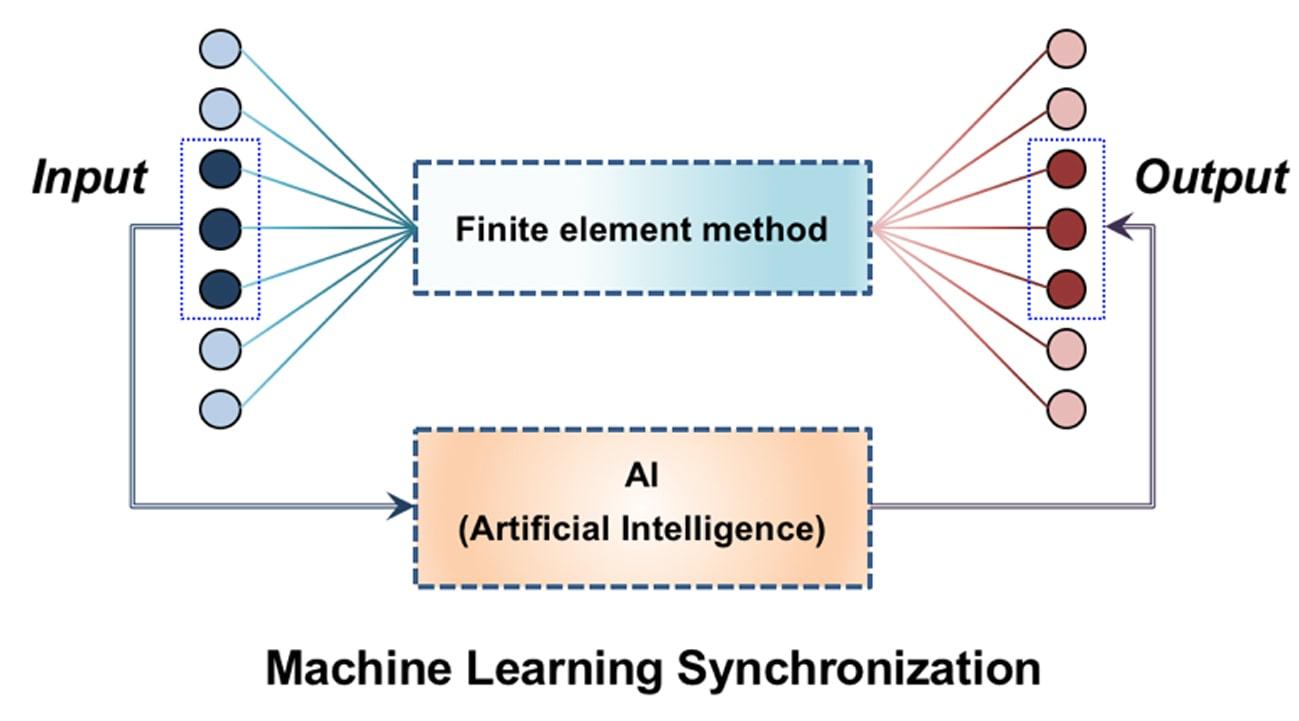
1st generation AI model
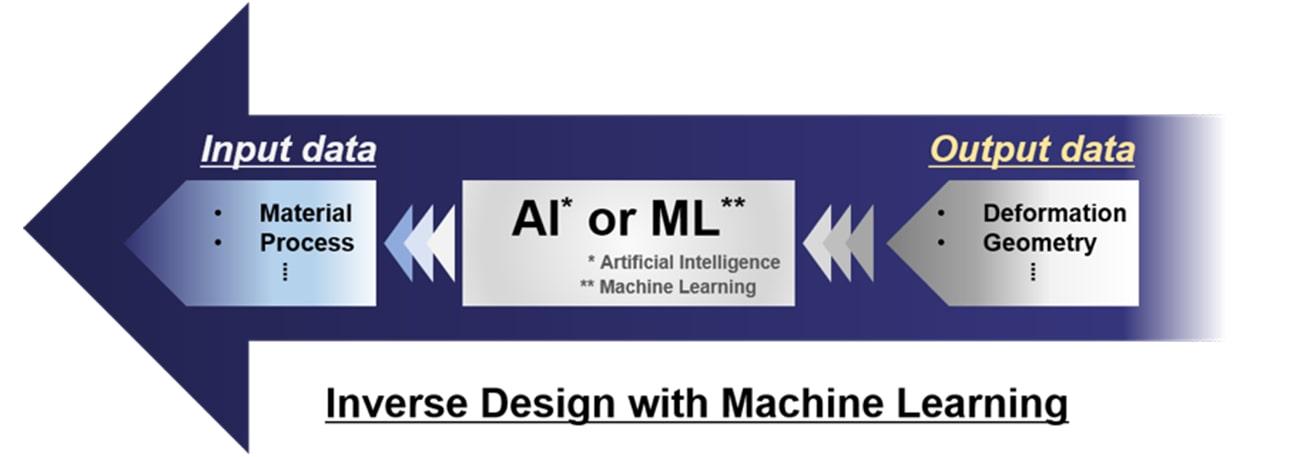
2nd generation AI model
About Jeong Whan Yoon

Prof. Jeong Whan Yoon is currently the Professor of Mechanical Engineering at KAIST in Korea and Professor of Applied Mechanics at Deakin University in Australia. He’s leading the International Consortium for Innovative Manufacturing (ICIM) with General Motors toward manufacturing for lightweight materials and structures. He also led Boeing-chaired manufacturing research (AusAMRC) at Swinburne University and has published over 200 technical papers for international journals and conferences with over 8500 citations (H-index: 47). He received the 2008 International Journal of Plasticity Award for outstanding contributions in the field of plasticity and has served as the journal’s Associate Editor since 2019. He has diverse industry experience including LG Electronics (Korea), MSC Software Corporation (USA), and Alcoa Technical Center (USA). He served as the chairman of NUMISHEET2014 held in Melbourne, Australia and AEPA2018 in Jeju island, Korea. He received his PhD at KAIST in 1997.








